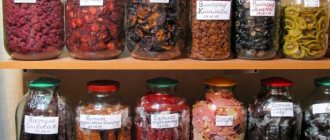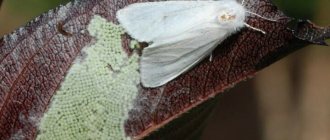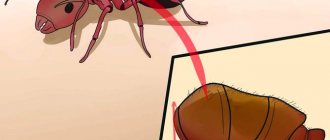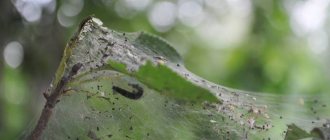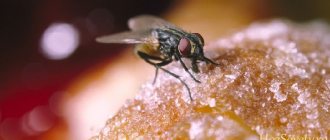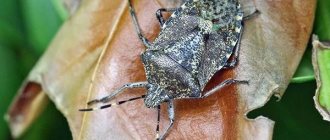A farmer can preserve and protect plant crops planted in a garden or vegetable garden not only by chemical, but also by organizational, economic, agrotechnical, mechanical and biological methods. By taking the above measures, you will be able to avoid damage and death of a healthy crop.
Measures to protect garden and vegetable crops are aimed at reducing the number of dangerous pests and pathogens, preventing their mass reproduction or increasing plant resistance to damage and diseases. A set of techniques aimed at destroying pests and pathogens or reducing damage from them is called a system of plant protection measures. It includes organizational and economic measures, agrotechnical, mechanical, biological and chemical control methods. All these methods are combined with each other, complementing each other.
Organizational and economic measures
The group of organizational and economic measures includes, first of all, the correct placement of trees on the site. It involves maintaining optimal distances between trees, determined by agricultural instructions. Tall varieties require a large feeding area (usually 4x5 m), while semi-dwarf and dwarf varieties require less. Condensation of plants is undesirable: by closing their crowns, the trees interfere with each other, spraying the trees becomes difficult, and lighting conditions worsen. Dense plantings are also less likely to be blown by the wind.
Varieties of fruit crops of different ripening periods are sprayed an unequal number of times: summer varieties less, winter varieties more. Often different means are used to process them. Therefore, it is advisable to place trees with the same fruit ripening period in groups. This will protect summer varieties, especially during the period of ripening and harvesting, from contact with pesticides when spraying winter varieties.
Planting material for planting and updating a garden and berry garden, seedlings and seeds of vegetable and flower crops must be healthy and not infected with pests and diseases. Aphids, leaf rollers, scale insects, phylloxera, and some pathogens can be brought into the garden with planting material. Therefore, it is better to take planting material not from private individuals, but from fruit nurseries.
Sometimes, in order to more fully utilize the land, berry bushes, strawberries, and vegetable crops are placed between the trees. Such placement can be justified only in the first years after planting the garden, when there is still no need to spray the trees with pesticides. When sprayed, pesticides fall on berries, strawberries, and vegetable crops growing under trees and make them of little use or unsuitable for use as food.
Ways to combat midges
To destroy clouds of flying insects, you can use special means. They can kill effectively and quickly. The downside is the presence in their composition of harmful components that affect human health and the impossibility of use in the kitchen area. If there are small children in the house, people suffering from allergies should give preference to folk remedies.
Cleanliness and tidiness
Their effectiveness should be supported by cleanliness in the apartment and especially in the kitchen. Therefore, simultaneously with the destruction of insects, it is necessary to perform the following actions.
- The trash can is emptied as it is full, but at least once every two days. The container is washed and dried regularly. Treatment with an antiseptic will give a good effect.
- The place where the pet is kept, its feeding bowl and toilet must be kept clean. When breeding fish, it is important to monitor the frequency of water changes in the aquarium.
- A clog remover will help block the path from the sewer pipes. Instead, treating drain holes in the kitchen and bathroom with soda and vinegar is suitable. Foam helps remove food residues. Finally, wash with plenty of water.
- Vegetables and fruits are sorted and stored in the refrigerator.
- Regular matches will help rid plants of insects. They are stuck into the ground with their heads down, watering is reduced and tea leaves for feeding are abandoned. A preventative measure would be to use decorative pebbles on top of the soil or a small amount of ground black pepper. You can moisten the soil from time to time with a weak solution of potassium permanganate.
It is also worth cleaning the kitchen regularly, not leaving leftover food on the table, dirty dishes, or bread crumbs. Monitor the status of stocks and get rid of spoiled products.
Compliance with these rules will not give midges a chance to establish a colony.
Midges will not get to vegetables and fruits if you store them in the refrigerator
Means for killing midges
Preventive measures involve performing a certain type of action. But if an insect invasion does occur, effective recipes that operate on the principle of a trap will tell you how to destroy the midges. Attracted by the appetizing smells, the flying aliens quickly penetrate the offered treat.
- A simple and effective method of destruction is the use of bait. Sweet tea, juice, compote, wine, etc. are suitable. The liquid is poured into a container with low sides. The layer height is approximately 5 mm. The next morning, the army of pests will drown in sweets.
- Banana peel trap. The bait is placed in a plastic bottle or jar. Holes are made in the plastic with a hot awl, and the jar is covered with polyethylene and pierced. After some time, almost the entire team of uninvited guests will gather inside. Now the trap can be taken out of the apartment.
- Cone trap. The film can be replaced with paper if there is no desire or suitable tool for creating holes. Attractive food for insects is placed at the bottom of the dish, and a cone twisted from a sheet is inserted into the neck.
- The smell of camphor will help repel midges. It is carefully heated until white smoke appears and is sent on a journey through the house. Harmful neighbors will leave your home as soon as possible.
A cone trap can be made from scrap materials
Agrotechnical measures
Agrotechnical measures, when carried out in a timely and high-quality manner, make it possible to grow strong, healthy plants that have increased resistance to damage by pests and diseases. They significantly reduce the number of pests and, accordingly, reduce damage from them. It is advisable to give preference to varieties that are resistant to pests and diseases if their yield and taste meet the requirements of the gardener. Loosening the soil, killing weeds, and moderate application of fertilizers prevent the proliferation of many pests and pathogens.
Autumn digging of the soil with careful embedding of fallen leaves and other plant debris is an effective method of combating apple scab, cabbage moths, leaf spots, etc. Pruning and burning dry and damaged branches in the garden helps reduce the number of corrosive woody beetles, gooseberry aphids, apple glass, and raspberry flies and others. Many pests and pathogens reproduce on weeds and spread from them to crop plants.
Regular destruction of weeds reduces the number of cruciferous flea beetles, cabbage moths, white rot of garden crops and many other harmful organisms. Timely harvesting of apple fruits reduces their losses from codling moth and scab. Sowing flower plants and nectar plants in the area attracts beneficial insects. Feeding flowers with nectar increases their fertility and enhances beneficial activity.
Ecology DIRECTORY
AGRICULTURAL PEST - useless from an agricultural point of view. produced by an organism that damages valuable species of plants, animals or their products, and threatens human health. The largest number of “harmful” species are found among insects: mole cricket, Colorado potato beetle, turtle bugs, winter and cabbage cutworms, American white butterfly, apple moth, etc.; Among mammals, the most dangerous rodents are: mice, gophers, rats, etc. To combat Bc, a complex system of measures is used, including arpo- and forestry, physical, chemical (pesticides), and biological. [...]
On the day of extermination of stock pests in mills, cereal factories and elevators, granular or dusty cyanogen melt is scattered in a thin (1-3 mm) layer onto sheets of plywood, paper, roofing felt, etc. laid out on the floor and the room is closed for two days. If the air humidity is below 70%, then before scattering the cyanide, damp bags are hung around the room to sufficiently humidify the air, which accelerates the release of hydrocyanic acid.[...]
To destroy pests living in the soil (wireworms, beetle larvae), the dust is sprayed over the soil and then incorporated into it by plowing, hoeing or raking. Dust consumption rates are 100-250 kg/ha (10-25 kg of 12% technical hexachlorane, or 1-2.5 kg of gamma isomer per 1 ha).[...]
For the destruction of pests and to combat diseases, poison. chemicals are used in the form of dusts, liquids, vapors (or gases) and aerosols. [...]
To destroy pests in orchards, pollination with DDT dust is not effective enough, since it is difficult to treat tall trees with the dust-like preparation. In this case, the best effect is provided by DDT preparations for spraying (50% and 20% DDT emulsion concentrates, 30% wettable DDT powder for suspensions).[...]
A great effect in killing pests is often achieved by using several pesticides [101, 102].[...]
To catch and subsequently destroy pests, veto traps with ultraviolet radiation (EUV-30 and EUV-15 lamps) are used. Butterflies and flies are caught using traps containing fermenting odorous substances. To do this, compotes or decoctions are prepared from the leaves and fruits of plants with the addition of sugar and yeast. Troughs with fermenting liquid are hung in the crown of trees or placed among plants, daily cleaning them from insects.[...]
The use of biological agents to kill pests has been known for a long time. The Chinese used pharaoh ants to kill pests in granaries; insectivorous birds were brought to the island in 1762. Mauritius for the eradication of red locusts; dogs and many other animals destroy insects and rodents. Domestic cats were apparently the first biological means of pest control and played such a significant role in controlling the number of rats that their extermination in the Middle Ages may have led to the spread of bubonic plague in Europe. However, their effect on other organisms was unpredictable even in those days. In 1815, cats brought to the Ascension Islands to kill rats almost exterminated seabirds.[...]
The soil cultivation system, aimed at destroying pests in their development phases that take place in the soil, makes it possible to regulate the number of dangerous species such as the larvae of click beetles and darkling beetles (wireworms and false wireworms), bread beetles, beetles and some others. With timely peeling of stubble and subsequent cultivation of the soil to destroy carrion seedlings, the number of secretive stem pests and wheat thrips sharply decreases, and the contamination of fields with pathogenic microorganisms decreases. [...]
The main method of application is pollination to kill pests living on plants. Dust consumption rates in these cases range from 10 to 30 kg per hectare (1-3 kg of 12% technical hexachlorane, or 0.1-0.3 kg of gamma isomer per 1 ha).[...]
With the introduction of DDT preparations, it became possible to destroy pests for which previously there were no sufficiently effective means of control (the harmful turtle, the garden elephant complex, some types of bark beetles). In addition, when used against a number of important pests, including the main pest in horticulture—the codling moth—DDT preparations give better results than previously recommended preparations. In addition, DDT preparations give results no worse than other pesticides in the fight against many pests.[...]
Pesticides are chemicals used to kill crop pests.[...]
Some mineral fertilizers and lime can be used to kill pests. So, against naked slugs, superphosphate or lime is scattered between the rows. [...]
The range of pests they destroy is huge, and their effectiveness is high. Suffice it to say that such dangerous garden pests as ringed and gypsy moths, various sawflies, leaf rollers, moths, moths, and tahini are kept under constant control. The survival and accumulation of these flies on the site is facilitated by the presence of flowering wild and cultivated carrots, parsnips, honey and other umbelliferae. Hogweed, eryngium, heather, mustard plaster, gladysh, and angelica growing near the site are also a refuge for them. Ants and spiders do a huge job of destroying pests. [...]
In this way, the content of pesticides (substances used to kill pests, pathogens, and weeds) and a number of chemical elements in the soil is normalized—mainly heavy metals, halogens (for example, chlorine), as well as microelements. Moreover, the content of impurities is standardized depending on the type of food products grown on a given soil or in a given farm (meat, dairy, fish, vegetable).[...]
Manual collection of slugs in wet weather, especially after rain, and early in the morning due to dew. To collect and destroy the pest, you can use traps - shelters made of plywood, burlap, heaps of weeds. Shelters are placed evenly (at a distance of 3-5 m from each other) throughout the area and periodically inspected, collecting slugs. [...]
Fumigants are chemical substances (methyl bromide, chloropicrin, cyanoplast, etc.) used to destroy pests by poisoning them with toxic vapors or gases. [...]
The All-Union Research Institute of Plant Protection has established that with the timely destruction of pests and diseases, additional products worth 3-5 billion rubles can be obtained in the country.[...]
Bulb onions. An infusion of onion scales is used against spider mites. To prepare it, take 200 g of scales per 10 liters of water and leave for 24 hours. To destroy pests, two or three sprayings every 5 days are sufficient.[...]
The book contains recipes for potato dishes that are accessible to every housewife, tips on the use of tubers and juice in folk medicine, cosmetics, and tops for the destruction of pests and pathogens of garden and vegetable crops.[...]
To protect forest plantations from damage, preventive measures are used aimed at preventing the appearance and mass reproduction of forest pests and identifying diseases. Extermination measures are used to destroy pests and diseases. Prevention and extermination control provide effective protection of plantings, subject to their timely and correct application.[...]
To develop methods for integrated protection of plants and animals, an incomparably deeper ecological foundation is required than for traditional chemical means of pest control. [...]
When spraying, it is necessary to distribute the preparations evenly on the plant (in small drops in the form of dust). To do this, the tip of the apparatus is kept at a distance of 50-70 cm from the plant. To destroy pests and diseases developing on the underside of the leaves, the plant is treated from below. [...]
As soon as I put aside my fear of the supposed toxicity of tomatoes and tried them, I really liked their taste. Indeed, only the stem of the tomato is poisonous, the infusion of which is used to destroy pests of garden plants.[...]
Mevinfos (developed) is one of the most toxic organophosphorus products used in world agricultural practice. It is used, as a rule, to quickly destroy pests, in particular beet flies. It affects insects and ticks within a few minutes after treatment and quickly disintegrates into harmless products, so the waiting period when using it is very short: 3 days in Australia and the UK, 4 days in Germany, 1-5 days in the USA, which allows you to protect cultivated plant at a late stage of development. However, high toxicity sharply reduces the use of the insecticide, and therefore its turnover.[...]
The persistence of pesticides and their toxicity to beneficial organisms is currently a negative property. Modern requirements for organic pesticides are effectiveness in killing pests, non-toxicity to beneficial organisms, ability to break down into environmentally acceptable products while still having sufficient time of action, inability to move from the site of application and low potential for accumulation in any part of the environment. environment.[...]
Exterminatory (more precisely, therapeutic-exterminatory) methods include agrotechnical methods (correct crop rotation, sorting and cleaning of seeds, breeding and cultivation of infestable varieties of cultivated plants, etc.), biological (based on the destruction of pests by predatory and parasitic insects - entomophages, insectivorous birds, microorganisms, nematodes and their other natural enemies) and chemical, based on the use of special substances that are toxic to pests. [...]
When developing insecticides (along with the synthesis of drugs with possibly narrow selectivity for influencing a specific insect), the synthesis of sex attractants is provided for their use in bait areas with the subsequent destruction of pests with appropriate insecticides. The use of these drugs eliminates the problem of residual amounts of drugs in the crop harvest.[...]
Designed for treating small areas, pockets of weeds with herbicides, as well as for treating vineyards, low trees, vegetable and flower plants to destroy pests and diseases. The sprayer consists of a cylindrical tank, an air piston pump and a fire nozzle with a double spray tip connected to the tank with a rubber-fabric hose. At the top there is a hole with a threaded neck in which the air pump is secured using a wing nut. There is a control hole with a plug in the side wall of the tank.[...]
In addition, forest plantations against the backdrop of agricultural land perform an important function of preserving, restoring and increasing the biological productivity of the landscape. Forest plantations are the only place for the survival of natural avifauna, the role of which in the destruction of pests of cultivated plants and weed seeds is exceptionally great. [...]
Sulfur dioxide. Colorless gas with a pungent odor. Dissolves in alcohols, acetic and sulfuric acids, chloroform and ether. Easily liquefied. Forms sulfurous acid with water. Produced by burning sulfur. It is used to combat diseases of agricultural plants and destroy pests.[...]
Biological control is based on direct struggle between organisms. In addition, there are bacterial diseases of insects and viral diseases of bacteria. Through the introduction of natural parasites or pathogen predators, the fight between organisms can be directed toward the destruction of plant pests. An example is the recent use of spraying preparations of spores of Bacillus thurin-giensis, a natural pathogen of caterpillars. [...]
The practice of using rice fields for growing fish indicates certain advantages of such farming compared to rice monoculture. In combined rice-fish farming, fish farming has a positive effect on increasing rice yield by increasing soil fertility and eliminating pests. This is due to the fact that fish, in search of food, loosens the soil, destroys the film formed on the soil surface and thus improves the conditions for rice growth. Fish excrement and supplied food, if used, serve as additional fertilizer. By eating weed seeds, harmful insects and their larvae, including the larvae of the rice mosquito, the main rice pest, the fish increases the rice yield.[...]
When deforestation occurs in the temperate or northern zone (Fig. 6.10, a), nutrients remain in the soil, its structure is preserved, and it is possible to harvest annual crops in the cleared area for many years by plowing and applying inorganic fertilizers. Low winter temperatures help retain nutrients in the soil and destroy “pests” and “parasites.” [...]
Currently, there is not enough information to quantify the release of pesticides into the aquatic environment from various sources. However, a general assessment of entry routes can be made. Persistent pesticides enter the aquatic environment through direct and indirect routes. The direct way is to introduce pesticides directly into the aquatic environment to destroy pests living there, as well as along with industrial waste. A number of organic pesticides are introduced into water to limit the number of insects living in the water, non-commercial fish species, and aquatic plants. In most cases, the dose of pesticides is carefully controlled. However, the most careful control may not be sufficient for mass application, such as in the extermination of mosquitoes. If waste from pesticide production is not carefully controlled, it will also contain pesticides. [...]
The first - 12-15 days after emergence, the second - during the budding period of plants, mainly on crops to obtain seeds. It is recommended to do these sprayings in combination - together with insecticides to kill pests. On crops intended to produce green mass, a second chemical treatment is not carried out.[...]
In connection with what has just been said, the yield of boletus mushrooms per unit area is also very different. According to available information, for example, the yield of porcini mushroom under favorable growing conditions reaches about 500 kg, and even almost 1000 kg of fresh mushrooms per hectare. At the same time, in lean years you can get only a few kilograms from 1 hectare or nothing at all. When calculating mushroom reserves, an average of 100 kg per hectare is sometimes taken. However, yields are often reduced significantly, and in some years even to the point of being completely destroyed by insect pests. The maximum damage to boletus mushrooms is caused by the larvae of flies from the family Muscidae, while almost all agaric fungi are caused by the larvae of forest mosquitoes from the family Mycetophilidae. As for fungal pests, they are very rare on living fruiting bodies of boletaceae. Relatively more often, representatives of the genus Sepedonium can be found, especially S. chrysospermum, usually developing on the underside of the cap, first in the form of white, then bright golden-yellow mold, in which its bright golden-yellow warty spores are easily visible under a microscope (chlamydospores).[...]
Mechanical measures
The mechanical method of control includes measures aimed at the physical extermination of harmful insects, and sometimes pathogens, and at creating obstacles for the penetration of pests to the fruit tree or its crown. This group of methods includes, for example, removing from the branches and burning the winter nests of lacewings and hawthorns, hanging trapping belts on trunks, manually collecting and destroying the Colorado potato beetle, cabbage whitethorn caterpillars, etc.
Insect pests of the garden and vegetable garden
Depending on the area where your property is located, different types of pests may be found on it. All of them can be conditionally divided into 4 groups according to their habitats.
Biting pests
- Ixodid ticks
- Mosquitoes
- Wasps
- Horseflies
- Gadflies
- Hornets
- Carnivorous midges
Earth pests
- Medvedki
- Wireworms
- Garden ants
- May beetle larvae
- Larvae of other insect species
Parasites that destroy plants
- Plant mites
- Aphid
- Whiteflies
- Gall midges
- Bark beetles
- Leaf beetles
- Weevils
- Plant moth
- codling moth
- Colorado beetle
- Fruit flies
- Nematodes
bell bells
, and some types of
midges
and flies
live in the water
Insect pests of the garden and vegetable garden may be at different stages of development at the time of persecution. In some cases, this may be important for choosing a particular method or means for their destruction.
Biological control method
The biological method of controlling pests and plant pathogens is based on the use of their natural enemies - predatory and parasitic insects, mites, and insectivorous birds. Viruses and bacteria are also used. Bacteria are grouped into the kingdom Eubacteria or Bacteria. The kingdom is divided into several types: Gr..., mushrooms, often causing mass death of pests. By the way, parasites are considered to be animals that live on the body or inside other animal “hosts”, feeding on their juices or tissues. Parasites lead their “host” to death when they complete their development. The predator feeds on the prey for a short time, killing it immediately. Among the predators in gardens and vegetable gardens, ladybugs, lacewings, ground beetles, tachina flies, spiders, and predatory mites are often found, and among parasites - trichogramma, aphelinus, eupteromalus and other hymenoptera.
Beneficial organisms are used to control pests in a variety of ways. For example, Trichogramma is bred in laboratories and then released into gardens and vegetable gardens in order to combat the codling moth and cabbage moth. The predatory mite Phytoseiulus is bred and released into greenhouses to combat spider mites on cucumbers. In a garden plot, it is possible to attract parasites and predators and protect them by sowing phacelia, mustard, dill and other nectar plants. A reasonable reduction in the volume and timing of the use of pesticides will help preserve beneficial insects and mites. A number of bacterial and fungal preparations for pest control are produced by industry (lepidocide, bitoxibacillin). In order to attract insectivorous birds (tits, flycatchers, starlings) to the gardens, birdhouses and other nest boxes are hung in the gardens.
Common pests.
- Aphid • Signs of damage: plant growth slows down, foliage may be sticky and deformed. • Methods of control: You can collect aphids with your hands, treat them with a stream of water, or use appropriate preparations.
Aphid - Weevils • Signs of damage: holes can be found on the leaves; this pest is especially active at night. • Methods of control: We remove pests by hand. We water with water with pest control drugs diluted in it.
Weevil - Mealybugs • Signs of damage: small, white, fluffy spots on the veins of leaves and shoots of plants. • Methods of control: remove with a cosmetic stick soaked in insecticide. Biological control methods can be used.
Mealybug - Spider mites • Signs of damage: red spiders, thin cobwebs on the leaves and frequent small specks. • Control methods: water the plants, as mites do not like wet soil. Biological control methods can be used.
Spider mite - Shields • Signs of damage: small, bronze insects sit firmly on the leaves and shoots of plants. • Methods of control: remove pests with a brush or cosmetic stick dipped in a suitable insecticide.
Shchitovka - Springtails • Signs of damage: if you touch the ground, small, white beetles appear and jump quickly. • Methods of control: improve water permeability, add a little lime (careful if plants prefer acidic soil).
Springtails - Whiteflies • Signs of damage: small, white flies on the leaves. May cause black plaque to appear. • Methods of control: an elusive pest, we use contact insecticide and biological control methods.
Whitefly
Prevention and pest control. Proper care and compliance with all requirements for growing indoor plants help prevent the occurrence of diseases and pests. Constantly inspect your plants for diseases and pests. Good luck to you.
Chemical control method
The chemical control method is based on the use of chemicals against pests and diseases: insecticides against insects, acaricides against ticks, fungicides against fungal diseases. Chemicals can be used by spraying, less commonly pollinating plants, introducing them into the soil, preparing poisoned baits, sometimes gassing (plants, warehouses, greenhouses, containers), dressing seeds, bulbs and tubers intended for planting. Chemicals are applied to plants using special equipment - sprayers, bleaches. The chemical method is convenient and easy to use. It reliably protects the crop. However, pesticides are not harmless to humans and domestic animals, which requires caution when handling them.
In addition, pesticides kill not only harmful but also beneficial organisms. Accumulating in fruits and other parts of plants, toxic chemicals can pose a danger to people. Getting into the air, soil, water, they, together with fertilizers and herbicides, are a source of environmental pollution. Therefore, in recent years there has been a tendency to use pesticides less frequently, only in the presence of a significant number of pests, when it is impossible to reduce their numbers by other methods.
Scientists have developed thresholds of harmfulness, i.e., they have established such quantities of certain pests at which and above which treatment with pesticides becomes advisable. To obtain a higher effect and avoid burns to sprayed plants, when using pesticides it is necessary to adhere to the concentrations recommended by the instructions.
Mechanical and biochemical means
If you find pests or damaged areas during your weekly inspection, then you need to act proactively.
- While the scale of the damage is still small, it is quite easy to collect by hand, wash off, scrape off aphids or other pests.
- A lukewarm shower (cold water can cause “shock” to the plant) washes away almost everything. Just don't forget the back of the leaves! To prevent the flower from falling out of the pot when turned upside down, you need to put it in a plastic bag and tie the pot tightly together with the soil. Plants prepared in this way can be dipped upside down in water, adding a few drops of dishwashing detergent. But, unfortunately, such measures can only be taken for relatively small plants.
- Diseased or damaged plants should be removed immediately. Wash garden tools and hands immediately and thoroughly.
- Whiteflies, sciarid mosquitoes and other plant pests are caught on the windowsill using small yellow plates (“flycatchers”) covered with glue. They are inserted into flower pots.
- Spider mites can be expelled by strongly increasing air humidity if the affected plants tolerate this calmly. You need to water the plant well and place it in a transparent plastic bag for 10-14 days, securing it above a pot of soil. The moisture that evaporates from the leaves will settle inside the bag.
